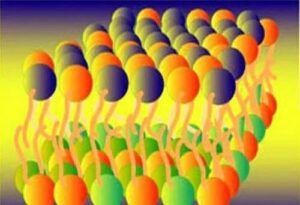Abstract: The cross-linking during the tissue fixation changes tertiary and quaternary structures of many antigens. Specific antibodies can hardly detect. Antigen retrieval methods aim to restore the lost antigenicity and theoretically restore protein conformation before the fixation. About 85% formalin-fixed antigens should be optimized for immune reaction by the antigen retrieval method.
Keywords: Antigen Retrieval, Antigen Retrieval in IHC, Antigen Retrieval Methods
1. Antigen Retrieval Protocol
The necessity of antigen retrieval depends on antigens ready for detection and used antibodies. Compared with monoclonal antibodies, polyclonal antibodies have high sensitivity and can more easily detect antigens without antigen retrieval. Currently, there are two kinds of antigen retrieval methods: heat induced antigen retrieval (HIER) and protease induced epitope retrieval (PIER).
2. Detergents and Chaotropic Substances
Detergents and chaotropic substances are usually together used with HIER or PIER. The efficiency is lower than HIER and PIER.
2.1. Antigen Retrieval Methods Using Detergents
Detergents can form particles in the aqueous solution and decrease surface tension of water. Hence, they are also surfactants. Detergents simulate lipid bilayer environment and can dissolve membrane protein. Then, detergents micelle consisting of lipid, detergents and proteins form mixed particles (Usually, a particle contains a protein molecule). Common detergents in IHC are non-ionic. These substances are suitable for breaking lipid–lipid interactions and lipid–protein interactions without damaging protein–protein interactions. Thus, detergents are not denaturants. Non-ionic detergents mainly include TritonR-X100, Tween20, saponin, BRIJR and NP-40. Generally, they’re added into wash buffer(e.g. 0.05% V/V Tween 20 ).

2.2. Antigen Retrieval Methods Using Detergents
Dispersants cover guanidine hydrochloride, sodium sulfocyanate and cesium. They’re considered as protein denaturants. The partial opening or reversal of formalin results in protein crosslinking by opening protein complex. Usually, the efficiency of using detergents or dispersants is low.
3. FineTest Antibody
Browse a list of FineTest antibody.
REFERENCES
[1] How does antigen retrieval work?
[2] Antigen retrieval techniques: current perspectives
